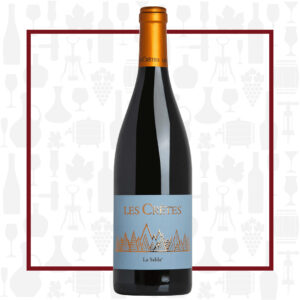Cellar Profile
In the mid 1700s, Bernardin Charrère moved from the Haute Savoie in Southeast France to the Aosta Valley and established Les Crêtes, a mill and farm in Aymavilles. This was in the middle of the 21 square mile Aosta Valley, in the heart of the wine region. In 1810, the family planted 2 hectares of vinifera grapes and the winery was born. The family still continues to craft wines from those vineyards to this day. Consistently recognized as the finest producer in the region, this is a boutique estate by international standards, but the largest privately-owned winery in Val d’Aosta. Working with the Italian government and other tiny vignerons in the region, Les Crêtes has been a pioneer in searching out rare, indigenous vinifera varieties — grapes like Petit Rouge, Mayolet, Prie Blanc, Premetta and Fumin, which exist nowhere else in the world — and helping protect them from extinction. This is one of the most challenging regions on earth to work for wine, with noncontiguous vineyards frequently planted on ledges on the side of steep Alpine mountains where they can find a little sandy soil. Hot summer days and extremely cool nights, coupled with a dry growing season allow for some of the longest hang times on earth. Their wines are powerful yet elegant, with trademark salty minerality – a true representation of this unique Alpine terroir.
Region
Italy’s smallest wine region, Valle d’Aosta is a tiny narrow strip of vineyard located northwest of Piedmont in the shadows of the Alps. This is one of the most challenging regions on earth to work for wine, with noncontiguous vineyards planted frequently on ledges on the side of steep Alpine mountains where they can find a little sandy soil. The extreme elevation, heroic vineyard work and particularity of the ancient, autochthonous vines make bringing in outside help difficult. You will find the vast majority of vines planted on their own rootstocks, for phylloxera does not survive at these altitudes. Similar to wine regions like Alsace and Alto-Adige, Valle d’Aosta is a hybrid of cultures: Italian, French and, to a lesser extent, Swiss. Vineyards here are predominately planted with local, indigenous varieties like Fumin, Prie Blanc, Petite Arvine and Petit Rouge. You will also find smatterings of Chardonnay, Nebbiolo, Syrah and other more widely-planted grapes. The wines offer a brilliant combination of weight, complexity and tingling acidity that make them a natural fit on the lunch or dinner table.
Vineyard
A proprietary blend of indigenous red grapes planted in the village of Aymavilles, right next to the winery. Farmed sustainably on sandy soils from vines up to 70 years old, planted at 2,200 feet elevation. The La Sabla, Bufferia and Sazzé vineyards from which these grapes are sourced are known for their high sand content, providing appreciable primary fruit elements to the finished wines.
Varieties
A unique blend of indigenous and international grape varieties, including Petit Rouge, Gamaret, Fumin, Pinot Noir and Mayolet. Petit Rouge is grown almost exclusively in the Val d’Aosta. Known for its low acid levels, dark colour and ripe fruit, it is generally used as a blending partner to more acidic and tannic varieties. In the Aymavilles sub-region of Val d’Aosta, it is used as the primary constituent of Torrette, where it must be at least 70% of the blend.
Winemaking
Hand-harvested from high-altitude vineyards. The grapes are fermented in stainless steel, low and slow at constant temperature, with a 10-12 day maceration to extract pigment and tannic structure, utilizing daily pumpovers. The wine is pressed into stainless steel for 8 months of aging before bottling.
Tasting Notes
Big and hearty, with bold aromas of cassis, black cherry, ripe strawberry and licorice. On the palate, this is a big, expressive wine. Tannins and acids both provide backbone to the ample black and red berry, spice box and black currant flavours. A long, juicy finish makes this a wonderful partner to a backyard barbecue.

 info@buyersandcellars.ca
www.buyersandcellars.ca
info@buyersandcellars.ca
www.buyersandcellars.ca